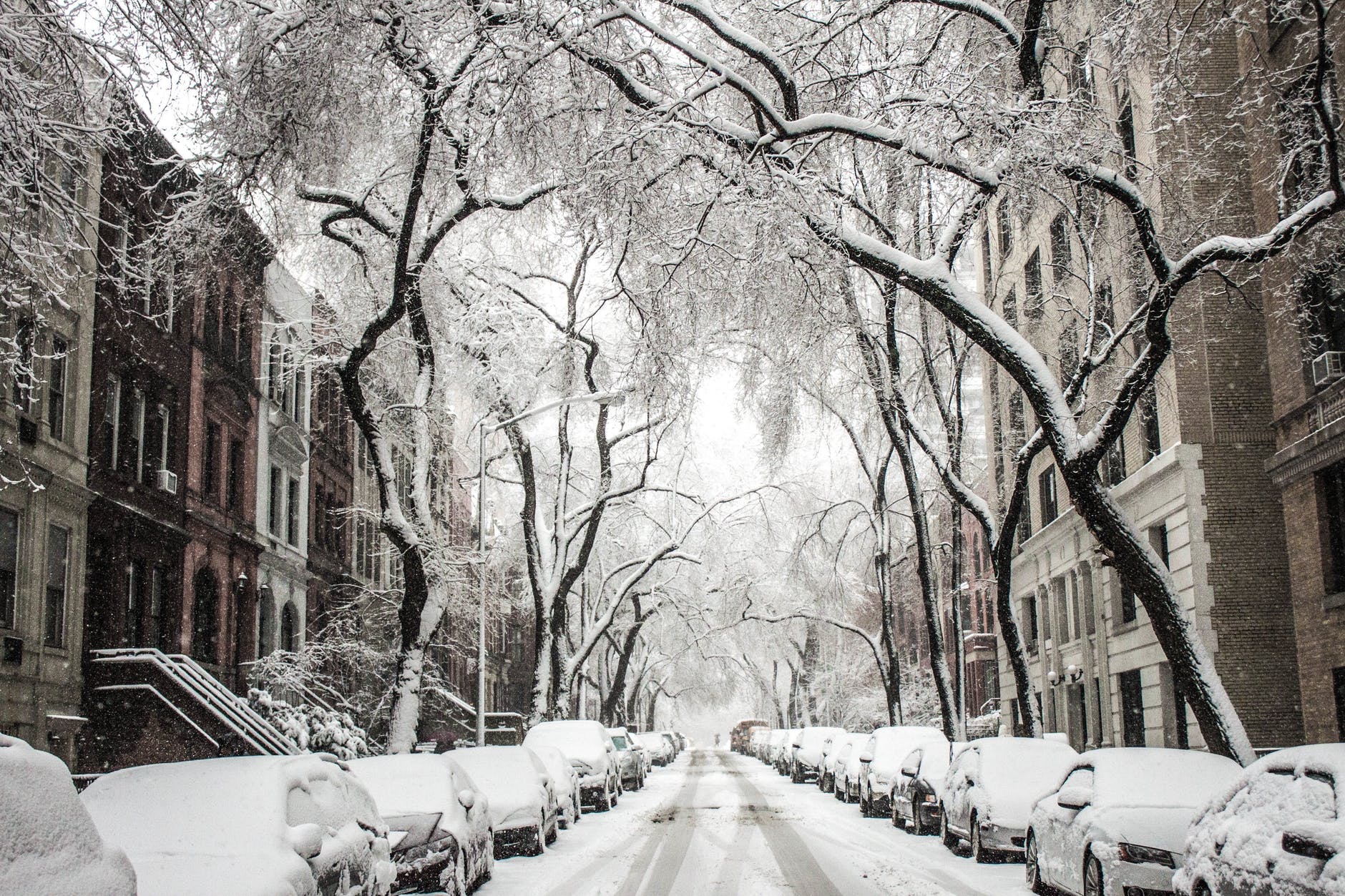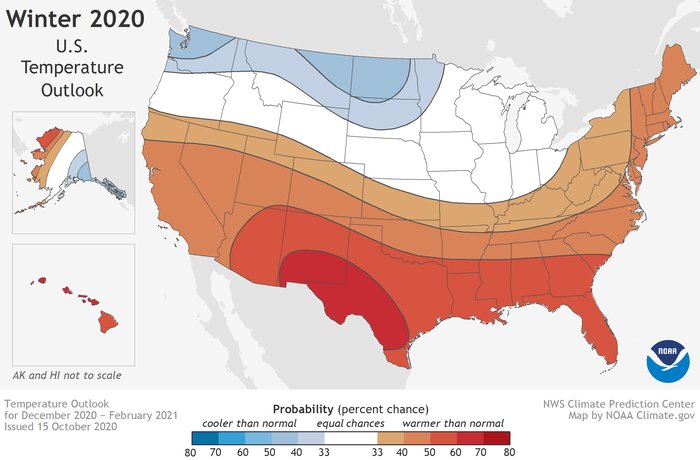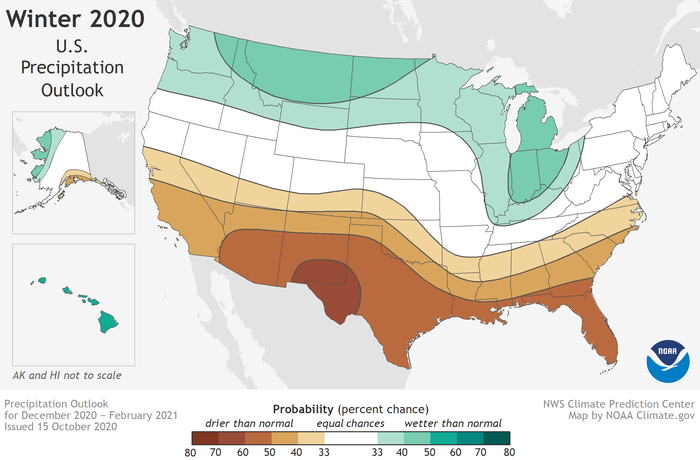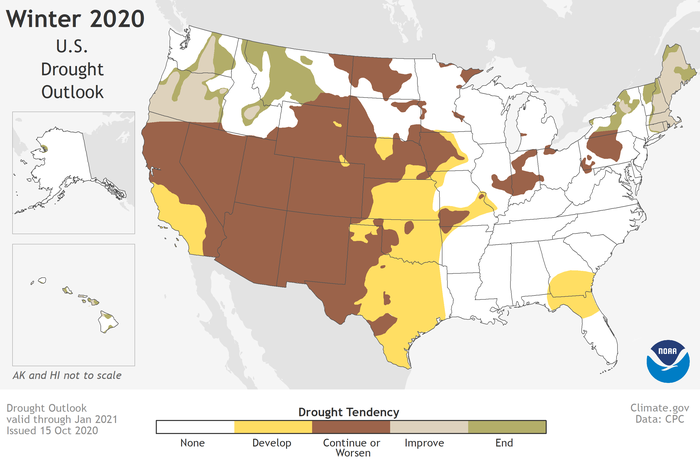
Forecasters at the National Oceanic and Atmospheric Administration (NOAA) and its Climate Prediction Center unveiled its official outlook for the winter climate for 2020-2021. In addition to exploring the odds for above/below normal temperatures and precipitation, scientists also explored how drought conditions could impact the nation in the coming months.
“NOAA’s timely and accurate seasonal outlooks and short-term forecasts are the result of improved satellite observations, more detailed computer forecast modeling, and expanding supercomputing capacity,” said Neil Jacobs, Ph.D., acting NOAA administrator. “From expansive and multi-hazard winter storms to narrow but intense lake effect snow, NOAA will provide the necessary information to keep communities safe.”
Key to the seasonal outlook is the fact that a La Nina climate pattern is back in place. The terms La Nina and El Nino refer to a phenomena in which waters of the equatorial Pacific become unusually cool or warm.
“The Pacific is the heat engine of the climate system,” said Amy Clement, a professor of Atmospheric Science at the Rosenstiel School of Marine and Atmospheric Science. The school is located on Virginia Key adjacent to Miami, Florida. “Imagine dropping a pebble in a pond and is sends out ripples,” she says, relating to how what happens in the Pacific can impact global weather patterns. “The pebbles are these giant convective clouds that have all kinds of weather associated with them. They send the ripples throughout the global atmosphere.”
“With La Nina well established and expected to persist through the upcoming 2020 winter season, we anticipate the typical, cooler, wetter North, and warmer, drier South, as the most likely outcome of winter weather that the U.S. will experience this year,” said Mike Halpert, deputy director of NOAA’s Climate Prediction Center.

Image: NOAA Climate.gov, using NWS CPC data
Specifically, NOAA expects that the southern half and east coast of the U.S. Mainland, Hawaii, and western and northern Alaska will likely see warmer than normal temperatures during December, January, and February. The Pacific northwest and southeastern Alaska are likely to see cooler than normal conditions during this period.
According to NOAA, the areas expecting warmer conditions will likely see drier ones, with the exception being Hawaii. The southern half of the United States is expected to be drier than normal, with the southernmost states most likely to be dry. Meanwhile, the Northern Plains and the Great Lakes regions are expected to see wetter than normal conditions along with Hawaii and western Alaska.

With dry conditions in the forecast across the south, there is concern about worsening drought conditions in the United States. Currently, large areas of drought extend over the western half of the U.S., with parts of the Northeast also experiencing drought and near-record low stream flows. With a La Nina climate pattern in place, southern parts of the U.S. may experience expanded and intensifying drought during the winter months ahead.

Widespread, ongoing drought is currently in place across the western half of the continental U.S. as a result of the weak Southwest summer monsoon season and near-record-high temperatures. Drought is also present in parts of the Northeast, Ohio Valley, Hawaii and Alaska. The ongoing La Nina is expected to expand and intensify drought across the southern and central Plains, eastern Gulf Coast, and in California during the months ahead. Drought conditions are expected to improve in the northern Rockies, Northwest, New England, Alaska and Hawaii over the coming months.
The National Weather Service office in Honolulu, Hawaii has scheduled a press conference for October 16 to discuss more specifics of what people in the Aloha State can expect during the winter season, which is typically the “wet season” there.